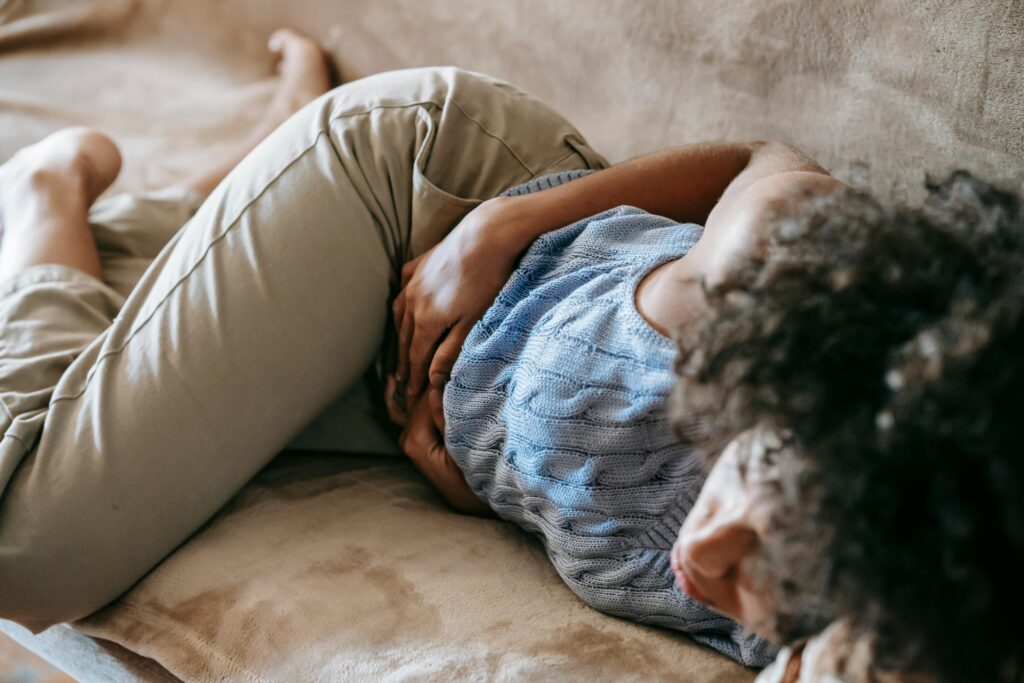This post contains Amazon affiliate links.
As women, we go through a lot. Menstrual cramps, for example, can be a very painful nuisance, and whether they come with your period or they show up unexpectedly, they can leave you feeling irritable, uncomfortable, and exhausted. I had horrible cramps as a teen and one of my kiddos experiences them too, unfortunately. And if you’re experiencing cramps but no period, you may be scratching your head, wondering what’s going on.
Because cramps are more common than you might think, it’s helpful to have some knowledge about your own reproductive system to understand why. Here’s a look at how you can deal with your cramps, no matter what’s causing them.
Understanding the cause of cramps
Firstly, if you’re having cramps but no period, you have to understand what might be causing them. Some can occur outside of your regular cycle, thanks to hormonal fluctuations, digestive issues, or stress. If you’re pregnant, cramps might also be a sign of early pregnancy during the implantation stage, although these are usually mild. If cramps are something that you are experiencing outside of your usual monthly cycle, it’s always a good idea to get checked out by your doctor.
Try heat therapy
While you’re trying to understand whether cramps are coming from, one of the best ways to relieve them is with heat, such as with a heating pad. Whether you’re dealing with menstrual cramps or cramps without a menstrual period, heat can help soothe your muscles and increase blood flow to the area for immense relief. In fact, for comfort, try curling up with a hot water bottle, a blanket (I like this cozy fleece one) and taking a nap. Sometimes the combination of warmth and relaxation is all you need.
Stay active
When cramps are happening, exercise is usually the last thing that you want to do. Most people want to immobilize when they’re dealing with cramps so that they can comfort themselves and try to get through the pain. However, light physical activity can make you feel better, and with gentle exercise such as walking, yoga, or stretching, you can improve your circulation and reduce muscle tension at the same time. This can help to ease cramps over time, and if you’re feeling up to it, a simple walk around the block can help to get your blood flowing. For extra comfort, you could even stream a fun movie or series on your TV or device and do some gentle stretching while you watch.
Hydrate

Did you know that dehydration can make cramps worse? I think I have that problem, as I tend not to drink enough water! Staying hydrated is absolutely key when it comes to cramping. If you consider cramps that you get in your muscles after exercise, it’s hydration and magnesium that can help to relieve it. Some easy ways to get magnesium into your diet include by taking a supplement or by eating magnesium-rich foods like dairy products, nuts, and seeds. Making sure that you’re drinking plenty of water throughout the day and even trying out herbal tea can really make a difference and help to relax your muscles. I have been working on drinking more water daily, and have been thinking of getting one of those marked water bottles that shows much water one is drinking to help meet my hydration goals.
Try over the counter pain relief
Sometimes, even heat and herbal teas can’t help cramps, so you need to go and seek the help from your pharmacist. Over the counter pain relief such as ibuprofen or acetaminophen can make a difference, as these medications can reduce information and can alleviate pain.
To conclude, cramps may be a normal part of life for many women, but that doesn’t mean you have to just cope with it—working to combat the pain is a smart decision.
Discover more from momhomeguide.com
Subscribe to get the latest posts sent to your email.

Leave a Reply